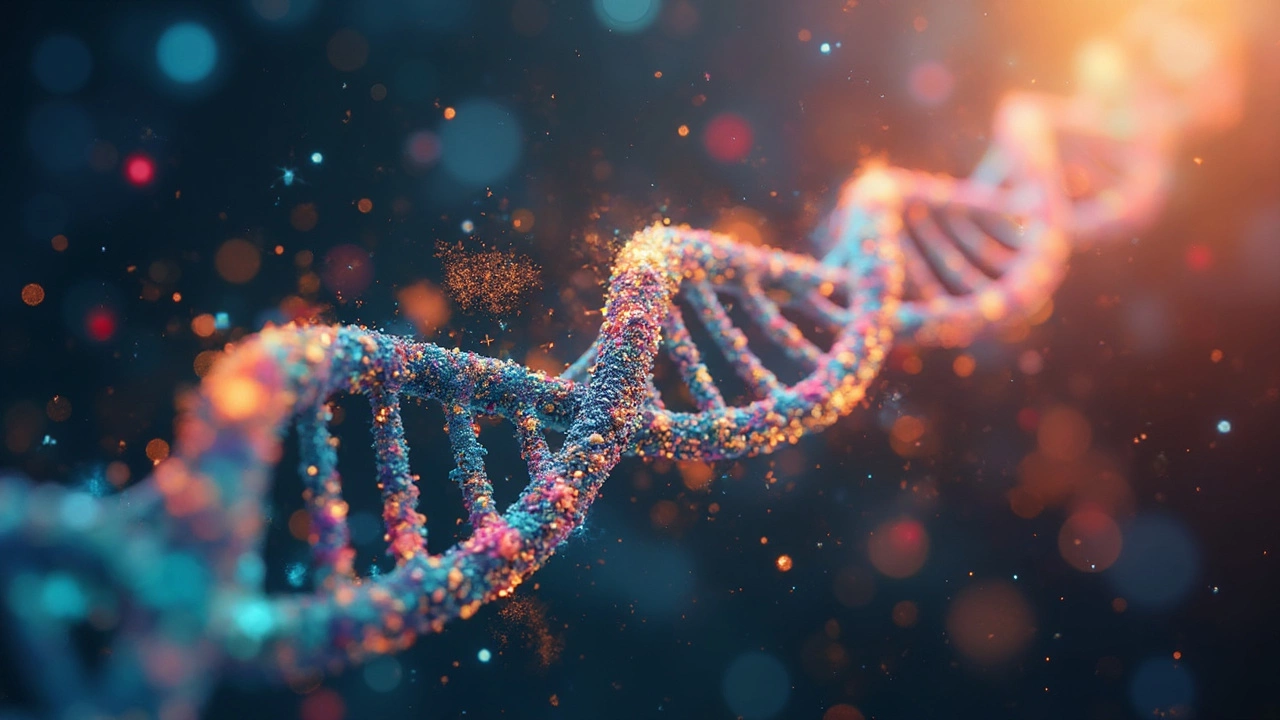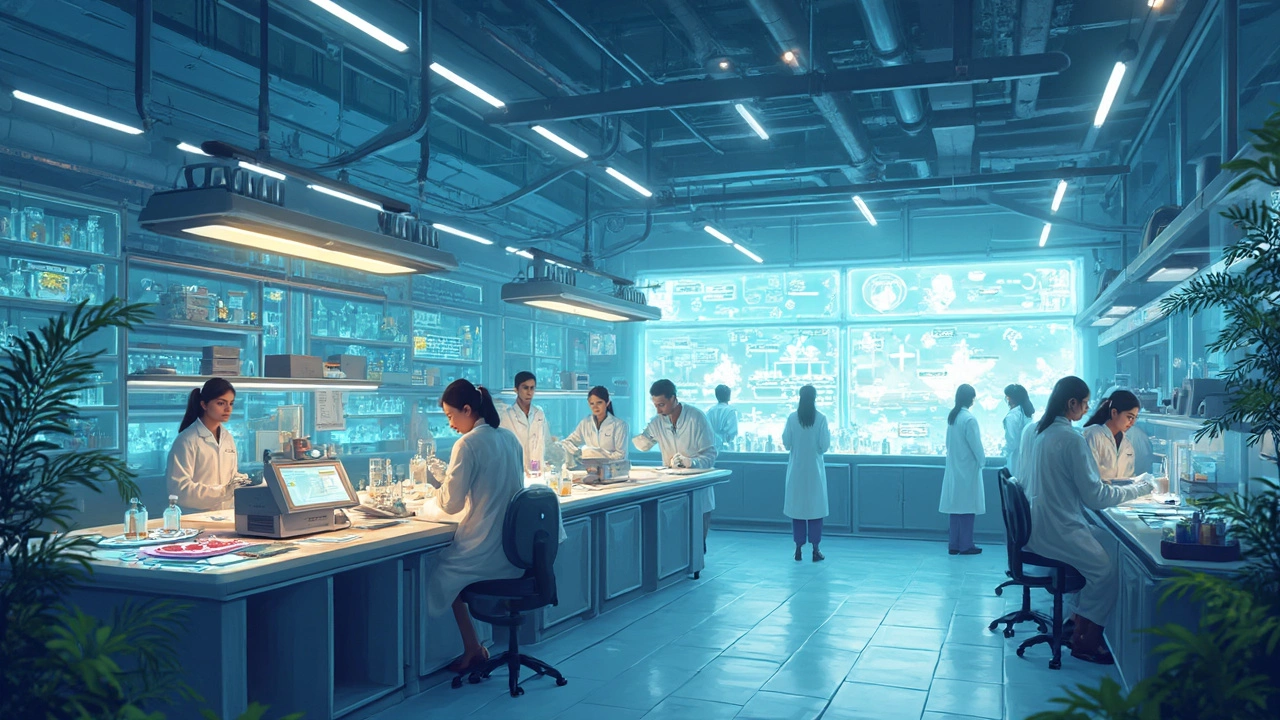Imagine being able to edit genes as easily as using a text editor. Sounds like science fiction, right? But that's exactly what CRISPR is doing today. This cutting-edge biotechnology allows scientists to cut and paste gene sequences, offering possibilities that were once purely the stuff of dreams.
CRISPR, which stands for Clustered Regularly Interspaced Short Palindromic Repeats, is a powerful tool in the world of genetic engineering. It wasn't until the 21st century that researchers harnessed this natural bacterial defense mechanism for human use. Now, it's a game-changer for exploring new cures and understanding the intricacies of genetic diseases.
What's so special about CRISPR? For starters, it's incredibly precise and relatively cost-effective compared to older methods. This means more researchers can access this technology, speeding up innovation across the board. Whether it's targeting hereditary diseases or improving agriculture, CRISPR is setting a whole new stage for what's possible.
- Introduction to CRISPR
- How CRISPR Works
- Applications of CRISPR
- Ethical Considerations
- Future of Biotechnology
Introduction to CRISPR
So, what's the buzz about CRISPR? This tech is the cool kid on the block in the world of biotechnology advancements. You've probably heard it mentioned in the news or maybe even in a classroom setting, but what makes it tick? Let's break it down.
CRISPR, which stands for Clustered Regularly Interspaced Short Palindromic Repeats, was first recognized in the early 2000s by researchers studying bacterial immune systems. Nature, as it turns out, is a pretty smart cookie. These bacteria use CRISPR sequences to fend off viral attacks, snipping and storing viral DNA segments for future defense—a fantastic natural copy-pasting trick!
Fast forward to today, and scientists have repurposed CRISPR into a powerful gene-editing tool. Imagine being able to directly edit our genes with precision. It essentially works like a pair of molecular scissors, cutting out unwanted parts of DNA and allowing for the insertion of new genetic material. This means scientists can target specific genetic codes and make necessary changes, which is revolutionary for treating genetic disorders.
How CRISPR Became a Groundbreaker
Back in the day, gene modification was the domain of bulky, expensive equipment and slow processes. CRISPR's development radically changed this. It's precise, works relatively quickly, and is a lot more affordable. How affordable? A CRISPR kit can be purchased by researchers for just a few hundred dollars, democratizing access to genetic modification on a global scale.
Why is it such a game-changer? Before CRISPR, genetic research was often slowed by high costs and low efficiency. Now, researchers worldwide are diving deep, exploring vast possibilities—from disease treatment innovations to improved agricultural practices.
CRISPR's Impact: A Global View
Let's talk numbers for a minute. Did you know that as of recent reports, over 300 clinical trials are utilizing CRISPR for various therapeutic applications? This chart-busting tool isn't just a concept; it's changing lives as we speak.
| Year | Number of CRISPR Studies |
|---|---|
| 2022 | 250+ |
| 2023 | 300+ |
These trials range from targeting genetic disorders like sickle cell anemia to potential cancer treatments. So yeah, CRISPR isn't just science fiction dreamland material—it's reality, right now.
How CRISPR Works
At its core, CRISPR is about precision breeding at a microscopic level. Scientists use a guide RNA to direct the system to the specific gene they want to modify. Think of it like a GPS that takes you right to the doorstep of a gene.
Understanding the Mechanics
It's basically a two-part system. The first part is the guide RNA (gRNA), which locates the target DNA sequence. The second is the Cas9 protein, a sort of molecular scissors that cuts the DNA at just the right spot. Once the cut is made, the cell's natural repair processes kick in, and that's where the magic happens. Scientists can disable, delete, or even overwrite parts of the genetic code, allowing for a variety of modifications.
CRISPR's Natural Origins
Interestingly, this technique mimics a natural defense mechanism found in bacteria. When viruses attack, bacteria use CRISPR sequences to remember the invaders' genetic code. They then use this information to mount a defense during future attacks, using the same cut-and-paste mechanism we now apply in labs worldwide.
Steps Involved
- Design the Guide RNA: Scientists first design an RNA strand that matches the target region of the DNA sequence.
- Assemble the CRISPR System: Combine the guide RNA with the Cas9 protein to form the complete CRISPR-Cas9 complex.
- Introduce the Complex: Inject the complex into cells where it will search for the matching DNA sequence.
- Cut and Repair: Once found, Cas9 cuts the DNA, and scientists can then modify the gene as needed.
One crucial point to remember is that the accuracy of the guide RNA greatly influences the success of the whole process. That's why designing a perfect match is crucial for avoiding off-target effects, where CRISPR might edit unintended sections of DNA.

Applications of CRISPR
When it comes to CRISPR, the applications are vast and truly fascinating. From revolutionizing medicine to transforming agriculture, this technology is reshaping the landscape of several industries.
Medicine and Genetic Diseases
One of the most exciting fields where CRISPR is making waves is medicine. Imagine being able to edit out the very genes that cause hereditary diseases. Diseases like cystic fibrosis and sickle cell anemia, traditionally considered life-long burdens, are now in the crosshairs of gene editing.
For instance, CRISPR has been used to successfully treat sickle cell patients by altering the gene mutation responsible for the disease. It's not just about treatment; it's about potential cures, which is a huge leap forward.
Agricultural Advancements
In agriculture, biotechnology through CRISPR is setting new standards. Crops can be engineered to withstand harsh weather, pests, and diseases. This not only boosts yield but also helps in reducing reliance on chemical pesticides.
Tomatoes that last longer and rice that grows bigger under the same conditions are just a couple of examples where genetic tweaks are making a substantial impact. The aim is to ensure food security in the face of a growing global population.
Beyond Animals: Environmental Impact
CRISPR isn't stopping at plants and humans. It's also being explored to control populations of disease-transmitting insects like mosquitoes. By altering genes that determine fertility, scientists aim to lower populations of mosquitoes responsible for spreading malaria and dengue.
Though still under research, imagine the potential decrease in disease spread with an effective mosquito control strategy.
| Area of Application | Example |
|---|---|
| Medicine | Treating genetic conditions like sickle cell anemia |
| Agriculture | Developing disease-resistant crops |
| Environmental Science | Controlling pest populations |
Biotechnology and Industry
In industries, CRISPR is being used to engineer microbes for better production and enhanced capabilities. Enzymes used in detergents, biofuels, and even fermentation processes can be optimized for efficiency and cost.
With gene editing, productivity and sustainability in microbial biotechnology are getting massive boosts. This only means better processes across various sectors, indicating a bright future for industrial applications.
Overall, while the potentials are extraordinary, it's good to remember that with such power comes the responsibility to address ethical concerns head-on. But still, these applications hint at a future that's as promising as it is groundbreaking.
Ethical Considerations
CRISPR gene editing is super exciting and opens up so many doors, but it's not without its ethical challenges. People are buzzing about the implications, and it's crucial we talk about them. Let's dig into what's at stake.
Designer Babies Debate
The idea of CRISPR potentially being used to create "designer babies" is a hot topic. Imagine being able to pick and choose your child's traits like hair color, intelligence level, or athletic ability. While this sounds intriguing, it raises big questions about what it means for society. Are we headed toward a future where only those who can afford such possibilities will have access, thus widening the social gap?
Unintended Consequences
Editing genes isn't like editing a Word doc. There's always a risk of unintended consequences. What if a tweak meant to fix one problem accidentally causes a different one? CRISPR's precision is one of its selling points, but even a small miscalculation can lead to unforeseen issues, especially when dealing with complex organisms.
Playing God
This brings us to the age-old question: are we playing God? Should humans have the power to alter life's building blocks so fundamentally? Some argue that there's a moral line we shouldn't cross, especially when it involves changes that could be passed down through generations.
Bioterrorism Risks
Another concern is less discussed but equally important. What if this powerful biotechnology fell into the wrong hands? There's a fear that CRISPR could be used as a tool for bioterrorism. The implications could be dangerous and unpredictable, making global security a significant concern.
Seeking a Balance
Many believe that while CRISPR offers groundbreaking opportunities, there needs to be a set of guidelines or regulations to ensure it's used responsibly. Striking a balance between innovation and ethical responsibility is key.
To sum it up, as we wade deeper into the CRISPR era, having these conversations is crucial. The world of biotechnology is evolving fast, and keeping ethics in focus will help pave a path that's both promising and principled.

Future of Biotechnology
The world of *biotechnology* is on the brink of some incredible advancements, thanks to tools like CRISPR. Imagine a future where genetic diseases could be eradicated or where crops are so resilient that famines become part of history. These are not just idle dreams; they are real possibilities in the years to come.
Let's break down some of the exciting prospects. In the medical field, personalized medicine is gaining traction. Using gene editing, treatments can be tailored to individual patients. This could mean fewer side effects and more effective interventions.
In agriculture, gene editing can enhance nutrition, improve yield, and increase resistance to pests without the need for pesticides. It could even enable plants to thrive in environments currently deemed unsuitable for farming. A more food-secure world is indeed within reach!
Expanding Horizons
Biotechnology is not without its ethical locks. As with any powerful technology, debates on regulation and ethical guidelines will play a significant role. A respected geneticist once said:
"With great power comes great responsibility. The ethics of gene editing are as crucial as the science itself."
The positive prospects are too enticing to be ignored, but society must tread carefully.
Stats You Should Know
| Field | Potential Impact |
|---|---|
| Medicine | 70% reduction in genetic disease prevalence |
| Agriculture | 30% increase in crop yields |
As biotechnology advancements continue to unfold, the need for skilled professionals in genetic engineering, bioinformatics, and regulatory bodies will skyrocket. Careers in these areas will be in high demand, ushering in a new era of scientific exploration and ethical evaluation.
To sum it all up, the future of biotechnology is super bright! As long as the benefits and ethical boundaries are carefully balanced, the potential for a healthier, more sustainable world is immense.



